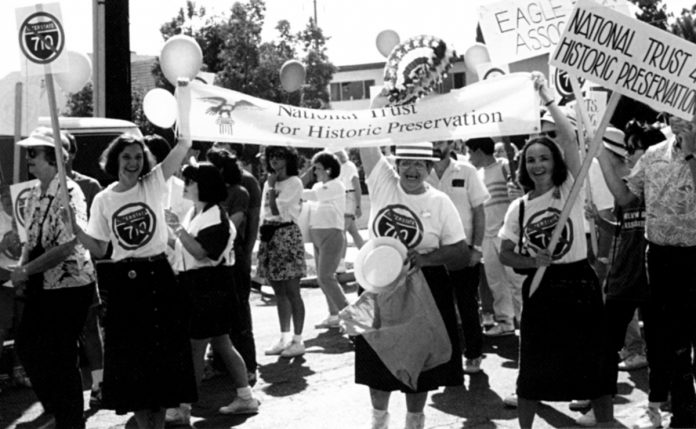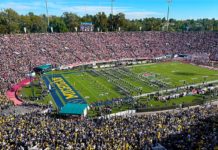710 Freeway South Pasadena: Twenty-five years ago, on July 19, 1999, an extraordinary ruling was handed down by federal district Judge Dean Pregerson in Los Angeles, halting the approval of the 710 freeway extension through Pasadena, South Pasadena, and El Sereno.
By Elizabeth Merritt
Deputy General Counsel
National Trust for Historic Preservation
It’s important to remember the magnitude of this destructive proposal, which would have demolished almost 1,000 homes and 6,000 trees in a six-mile area, displacing 2,400 people and cutting through the heart of four National Register historic districts while skirting the boundaries of two others.
The below-grade freeway would have included six cut-and-cover tunnels, and dozens of historic homes would have been temporarily stored and then relocated on top of the tunnel lids. At the time, the estimated cost was $1.4 billion (certainly much higher today), yet studies by the Department of Transportation estimated that, after all the construction was complete, traffic in the corridor would move less than one mile an hour faster than if no freeway were built at all.
This federal injunction was the second one.
The first was in 1973 initiated by the City of South Pasadena, Sierra Club, Concerned South West Residents of Pasadena and Center for Law in the Public Interest which stopped all construction on the stubs and halted Caltrans from buying any more houses until an adequate EIR was completed. This took Caltrans 4 drafts and 25 years, completed in 1998.
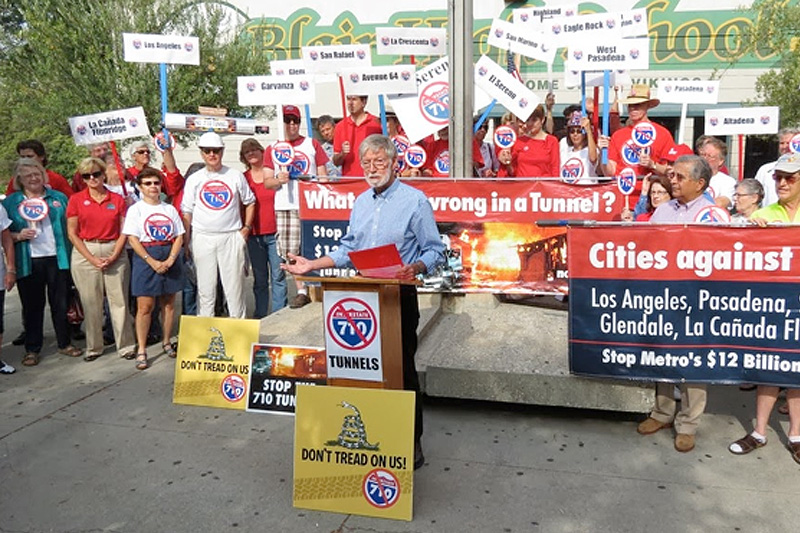
Initially the legal team wanted to extend this first injunction, in the end a decision was made to file for a new injunction based on the inadequacy of the document, which is the anniversary celebrated this year.
The Federal Highway Administration’s decision to approve the freeway project in 1998 was the culmination of an extraordinary administrative process, in which the Environmental Protection Agency, the Interior Department and the Advisory Council on Historic Preservation (ACHP) all raised formal objections to the project.
Rather than following its usual approach of signing a mitigation agreement, the ACHP exercised its rarely-used authority to oppose the project (on three separate occasions, actually), and even took the unprecedented step of sending its objections directly to the President of the United States in 1998.

Five years earlier, in January 1993, the ACHP had thwarted an effort by the Secretary of Transportation to ram through final approval of the project in the waning days of the Bush Administration by referring the inter-agency dispute to the Council on Environmental Quality (CEQ). In turn, CEQ asked the Secretary of Transportation to evaluate a “Low Build” Alternative, to use existing arterial surface streets rather than a freeway to improve the flow of traffic.

The objections raised by the three federal agencies did not have the effect of “vetoing” the freeway project, but they were highly influential in the court’s decision to issue the injunction. It’s a useful reminder of what a powerful statement it is when one federal agency is willing to say to another, “We think this project is wrong.”
In addition to the federal agency objections, it’s important to appreciate the decade of tireless advocacy leading up to the injunction by a broad coalition of freeway fighters, which included homeowners and residents in the corridor; preservation groups at the local, state and national level (including the National Trust for Historic Preservation); and the City of South Pasadena itself, which was determined to prevent the destruction of its core with a second freeway that would have cut the city into four pieces. And the legal victory would not have been possible without the hard work of the city’s special counsel, Tony Rossmann.
On July 19, 1999, the court concluded that the coalition was likely to win its lawsuit, and therefore an injunction should be issued on three primary grounds:
Section 4(f) of the Department of Transportation Act, because the Federal Highway Administration failed to provide adequate reasons for rejecting the “Low Build” alternative, which appeared to be “prudent and feasible” and would have avoided and/or minimized the destruction of historic properties.
The court also criticized the agency’s assumption that even the homes that would have been left perched on the edge of the yawning freeway trench would not suffer any substantial harm; The National Environmental Policy Act, because the “Low Build” Alternative was not adequately studied, and a supplemental EIS should have been prepared; and The Clean Air Act, because the estimated traffic on the proposed new freeway was not included in the long-term air quality projections for the region.

There was no shortage of dramatic developments leading up to this milestone decision. One memorable moment came in 1995, when the Keeper of the National Register officially recognized a working-class Latino neighborhood in El Sereno as being eligible for the National Register of Historic Places, despite objections from CalTrans. The National Register ruling, together with an “environmental justice” lawsuit filed by the NAACP Legal Defense Fund, led to the realignment and reconfiguration of the proposed freeway.
The cut-and-cover tunnels and below-grade alignment, which were originally limited to the affluent white neighborhoods in the corridor, were added to the El Sereno portion of the proposal as well. In an important precedent, the opinion by the Keeper of the National Register specifically recognized that National Register significance for residential developments should not be limited to those that are “strictly homogeneous in design (only grand estates, Craftsmen designs or certain income levels),” but can include diverse middle- and working-class neighborhoods as well.
710 Freeway South Pasadena: This recognition – that the National Register is not just for the mansions of wealthy white people – really helped galvanize the pride of the El Sereno community and their opposition to the freeway.
In December 2003, some five and a half years after the injunction was issued, the Federal Highway Administration suspended its approval of the freeway, advising CalTrans that a full supplemental EIS would be required before the project could be considered any further.
In April 2004, the California Transportation Commission responded by rescinding its own approval of the project, reversing a decision that was first adopted back in 1964.
 The subsequent proposal by CalTrans and Metro—to build 2 full-bore toll tunnels along the corridor instead of a cut & cover trench—has since been wisely rejected, and the local communities are focusing on “low build” solutions to the regional transportation needs – the very essence of the feasible and prudent alternative embraced and inspired by the federal court’s decision 25 years ago.
The subsequent proposal by CalTrans and Metro—to build 2 full-bore toll tunnels along the corridor instead of a cut & cover trench—has since been wisely rejected, and the local communities are focusing on “low build” solutions to the regional transportation needs – the very essence of the feasible and prudent alternative embraced and inspired by the federal court’s decision 25 years ago.
In addition, CalTrans is finally in the process of releasing the hundreds of homes that it acquired back in the 1970s, leaving the communities in the corridor with the opportunity—and the burden—of trying to recover from the decades of neglect and deterioration they suffered at the hands of CalTrans.
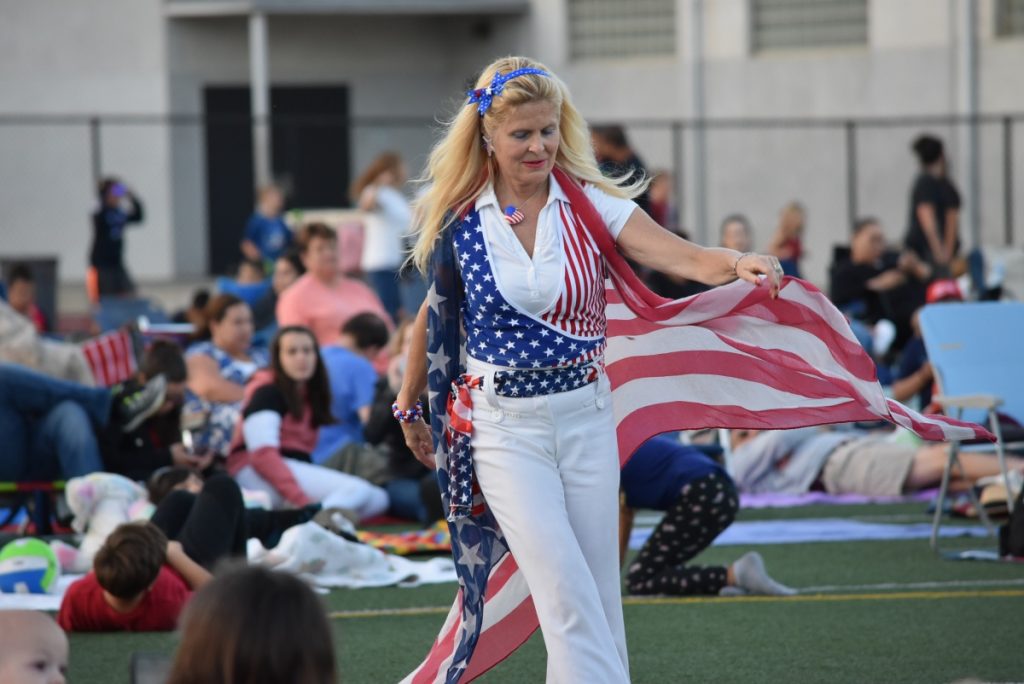
But meanwhile, we celebrate the 25th anniversary of the dramatic federal court injunction that forever changed the future of the historic communities in the corridor by stopping the highway project that would have destroyed them.






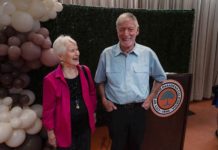




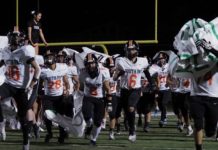


.png)







